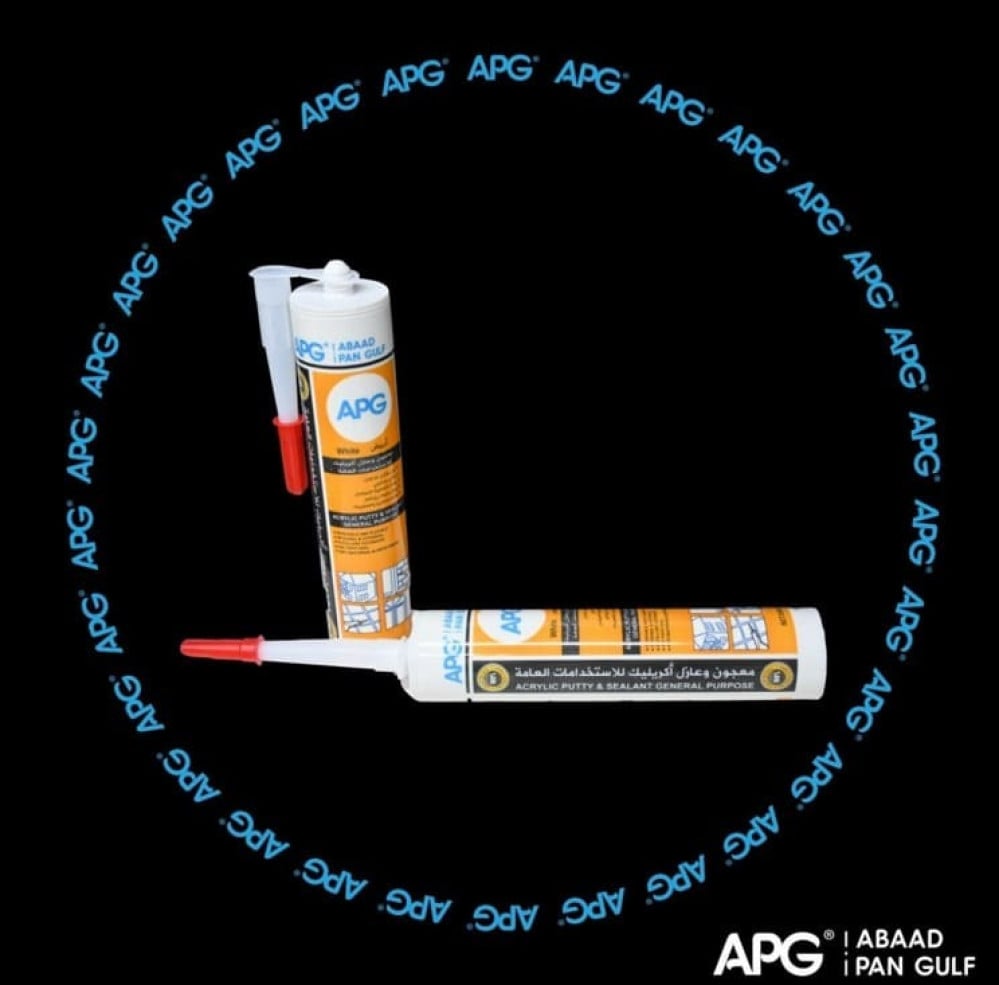All about acrylic putty
Acrylic putty is widely used for finishing, and to learn more about it, we provide you with everything you need to know about this miracle product and how to apply acrylic finishing putty, with acrylic putty, acrylic sealant, widely used by professionals in building renovation or restoration, acrylic putty is still unknown to individuals, so here are all the answers to your questions.
What is acrylic sealant?
Acrylic wall putty comes from the same manufacturing processes as acrylic paint, although the consistency is quite different, because acrylic putty is very compact and not as liquid as paint can be, it usually comes in a 300 ml cartridge, like silicone .
We know white putty, but did you know that there is a wide range of colors in acrylic putty, besides the professionals use it in custom furniture finishes... I am telling you that, but you should also realize that it is always easy to find acrylic finishing putty, in the Abed Company store across the Gulf APG , often white.
What is the difference between acrylic and silicone?
Unlike silicone, which is very resistant to water and moisture (which is why we will use it in the kitchen, bathroom and other joints...), acrylic sealant can be dissolved in water, especially when it is not dry. Acrylic sealant also offers the great advantage of being able to be painted, which is not at all like silicone.
For more details on the differences between these two products, here's what helps you choose between acrylic or silicone sealant.
What you use the product for As I mentioned in my introduction to acrylic finishing putty, acrylic sealant is very easy to use, easy to cover, and fairly inexpensive, making it a fairly widely used product for restoration. Examples of uses include:
-Filling cracks or holes in the wall or ceiling
-The joint between the base and the wall
-Joint between corner strip and wall
- Filling the gaps between the parquet strips
-Custom furniture finishes/fittings
-Used around window or door frame.
How to use acrylic sealant
There is no simpler way to use it, but you will need an indispensable tool, which is the cartridge gun, but do not hesitate to invest in the quality, it is a little more expensive but you keep it for years...
Here are the steps to install an acrylic stamp:
-Open the filler cartridge by cutting off the top of the cartridge with a cutter. You don't need to cut too much, the cartridge plastic isn't very thick at this point.
-Screw in cannula (plastic tip)
-Cut the tip of the cannula at an angle, there are indicators on the plastic to guide you.
-Insert the cartridge into the gun and push the plunger forcefully to squeeze out the paste.
-Apply the paste by gently pressing the trigger.
-Push acrylic putty gently with finger if necessary.
When finished, close the tube with the button provided, but don't think about reusing it after a year, as the paste may dry out in the meantime.
Tip: Depending on how you cut the cannula, the flow will be higher or lower, so I recommend testing before cutting too much cap.
In order to achieve a perfect finish and before painting, it is often necessary to apply an acrylic sealer into the corners and crevices in order to fill in all the gaps How to apply an acrylic sealer permanently.
Professionals recommend applying acrylic putty before painting the top of baseball batting for a perfect, lasting look.
What is acrylic putty used for?
It is not necessary but for a better result, it helps to fill the gaps that can be seen between two materials, some people think that acrylic finishing putty will be enough to fill small holes or gaps between the supports, but it does not work every time and especially over time, the paint may crack, which is not great at all.
When to use acrylic stamp?
Acrylic sealant is a product used to fill cracks or to add compensation in corner areas as I told you before and this solution adheres to all types of surfaces such as wood, aluminum, plaster... without requiring the application of an installation guide.
Unlike silicone, acrylic is odorless, can be painted easily, and can also be applied in multiple layers. However, acrylic is less viscous and less flexible than silicone and is only partially water repellent, so it is best to use silicone sealant in wet rooms such as the kitchen or bathroom.
Why choose acrylic finishing putty?
The great advantage of acrylic sealing compared to silicone in particular is that it can be applied without problems and that it can be painted easily, allowing us to achieve a very good presentation, which is of course the goal we want…
Steps to apply acrylic stamp:
- Clean and dust the backing, it is important that the acrylic adheres well to the backing which must be clean and dry.
- Using a cutter, cut the gasket cartridge, just enough to allow the putty to enter. Place the cannula firmly on the cartridge and cut it at an angle.
- Gently apply the acrylic stamp using the cartridge gun, trying to be as consistent as possible.
- Smooth and remove excess with a wet finger, remember to have a piece of paper handy to remove the acrylic from your hands, allow to dry for the time indicated on the cartridge, to ensure it is completely dry.
Tools needed:
The putty gun or cartridge is the same tool.
Cartridge of acrylic sealer (white), but if the support needs white acrylic paint, it is cheaper, and will be enough, apply a joint to join two supports of different types, wood/plaster, ceramic/concrete...
For my acrylic applications I often use APG Acrylic Finishing Paste Cartridge.

